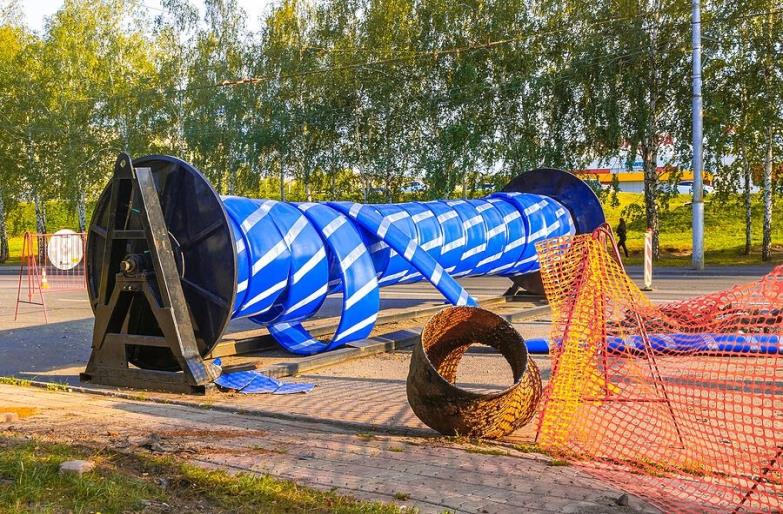Trenchless sewer line repair minimizes the invasiveness of pipe repairs to your property. This type of repair is typically less expensive, quicker, and more reliable than traditional methods.
Two access holes are made at the front and back of the damaged sewer pipe run. Then, a bursting head is pulled through the old sewer pipe, breaking it apart and drawing a new line into place.
For efficient gas hot water heater repair in Vancouver, residents can rely on experienced professionals to quickly diagnose and fix issues, ensuring a continuous supply of hot water for their homes.
Pipe Lining
Trenchless plumbing services are gaining popularity with homeowners due to their effectiveness and convenience. In particular, a new pipelining method allows plumbers to repair broken sewer lines without digging trenches. The
process begins with a thorough inspection of your sewer line using advanced camera technology to identify the source of the issue. Once the problem is identified, the damaged pipes will be cleaned and prepared for relining. It involves removing debris, scale, or sediment accumulated in the pipes. The cleaning process also enables the plumbers to inspect for cracks and other damage that would necessitate further repair work.
Once the pipes are clean, a flexible liner saturated with epoxy resin will be inserted into your existing pipe. The liner will be inflated, causing it to conform to the shape of your existing pipe. It will then harden and form a seamless, waterproof pipe within your existing pipe. The resulting pipe is designed to last for decades.
Another type of trenchless sewer line repair is slip lining or cured-in-place pipe (CIPP). Like pipe bursting, this process involves creating small entry and exit points above ground for a new pipe to be fed in. This method requires more preparation than pipe lining, as the pipes must be completely free of obstructions or leaks.
Pipe Bursting
If your sewer lines are damaged, you may need to replace them there. But this doesn’t have to mean digging up your property or destroying your yard. Instead, you can utilize a trenchless technology known as pipe bursting.
This method involves inserting a new line through an existing one using a machine called a ‘bursting head.’ The bursting head is slightly larger than the existing pipe, and when pulled, it fractures the old line while pulling in a new one that is the same or even a little larger in diameter.
The best part is that this doesn’t require digging trenches or destroying your property, saving you thousands of dollars in construction/remodeling costs. But be aware that this is not a permanent solution and that, eventually, you will need to have your entire line replaced with an entirely new one.
It’s also worth mentioning that this type of repair can only be used on house sewer lines, not commercial or industrial ones. Also, it needs to address problems like poor structure or routing, which require a full excavation and reinstallation of a new line. However, these are minor limitations, and overall, this is a great way to replace your old pipes. Especially considering these types of repairs can be accomplished in just a few hours.
Pipe Pulling
Trenchless sewer repair methods like pipe lining and pipe bursting can fix your damaged house sewer lines without all the hassles of traditional excavation. These methods don’t involve digging up your property and re-routing traffic. At times, a damaged or obstructed pipe cannot be repaired and requires complete replacement.
A traditional excavation and replacement method is usually the best option if your house sewer line is made of old clay or another material from years ago. Unfortunately, these pipes are also prone to breaking down over time and can be challenging to repair or replace.
A more efficient alternative is a trenchless method called pipe pulling. It involves feeding a new pipe through your existing broken sewer pipe. The new pipe is larger than the existing one, which will expand to fill its space once installed.
This process can be used to repair and replace both single-leaf and multiple-leaf residential house sewers. This type of repair can be completed in a single day, and it’s far less expensive than excavation and property restoration costs. That makes it a popular choice for customers who want to avoid the expense and disruption of traditional excavation methods. Trenchless methods are also safer than conventional excavation and are far more environmentally friendly than the open-pit mining methods of the past.
Installation
As with relining, installing new piping through trenchless methods can significantly improve the function of your sewer system. New pipes are more robust and durable and provide more flow capacity than older ones. They also last longer and need fewer future repairs.
New piping can be installed using several trenchless repair techniques, including directional drilling and pipe bursting. Directional drilling involves inserting a small machine into your yard, drilling down to the original line, and then tunneling back up to replace it with new piping. This technique can be used to replace entire sewer lines or sections of pipe.
When using pipelining, an epoxy-saturated liner is fed into your damaged sewage line and allowed to cure. This liner is like a pipe within a pipe, sealing any leaks or cracks that could allow sewage backups. The result is a robust, long-lasting pipe that can handle your waste without problems.
Sometimes, the line may be too damaged to repair with pipelining. If the line is sagging, badly cracked, or otherwise beyond repair, it may need to be replaced with a new line. It can also be accomplished through trenchless sewer line replacement, although more digging will be required to get to the old line. However, this method still allows for a faster, less invasive repair than traditional excavation methods.

